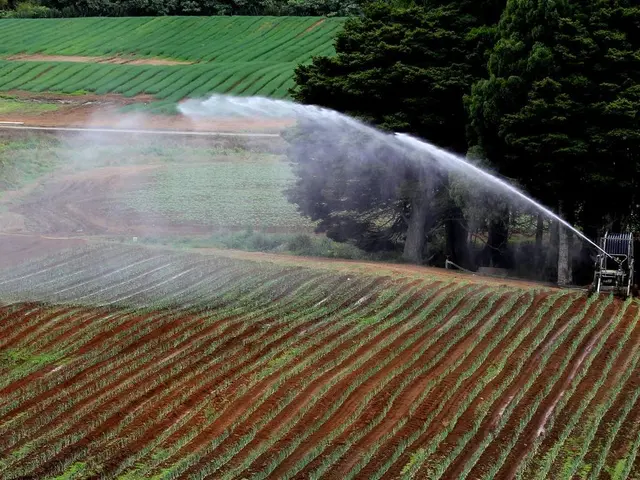Soaring commodity prices have users pondering if it's wise to invest in the current growth phase?
In a year marked by geopolitical unrest and the ongoing energy transition, commodity prices have seen significant fluctuations. According to recent reports, gold has gained 13% in dollar terms this year, reaching levels not seen in a while. Similarly, gold's traditional counterparts, copper and silver, have made new records in 2024, with copper up 14.5% and silver reaching levels not seen in 13 years.
One of the key drivers behind this surge has been the destabilization of energy and grain markets caused by Russia's 2022 invasion of Ukraine. This event has led to a tight oil supply, with members of the OPEC+ cartel holding back more than six million barrels of oil a day. As a result, Brent crude oil is up 11%, although it has slipped back since a peak in early April.
Energy has emerged as the most robust inflation hedge, as prices rise during supply and demand shocks. The current commodity tension is not just limited to oil, but also affects other industrial metals such as copper, aluminium, and zinc. The S&P GSCI index, which tracks 24 major raw materials, has climbed back more than 10% in the first half of 2024 after ending 2023 down 12%.
The World Bank blog states that global growth is tepid, yet demand from China, the world's largest consumer of metals and energy, has been stronger than expected. Infrastructure investment and expanding factory capacity in electronics and electric vehicles have buoyed China's appetite for raw materials.
However, a sharp drop off in Chinese construction activity could emerge as 'the dominant driver' of industrial metals prices later this year. This potential slowdown could be influenced by geopolitical risks and supply uncertainties such as potential disruptions in oil supply from Iran.
Commodity prices are predicted to stay close to 40% above 2015-2019 levels over the coming year. This persistence is mainly due to geopolitical tensions (e.g., conflicts in the Middle East), the current energy market instability, and a general balance of production and consumption that limits price declines, even with weak demand growth.
Climate change is another factor contributing to elevated commodity prices. Disrupted harvests of cocoa and coffee crops, for instance, prove inflationary. Moreover, the energy transition increases demand for metals as countries move towards renewable energy sources.
Looking ahead, the long-term outlook for copper, the key energy-transition metal, is encouraging. However, another price jump looks 'unlikely to emerge in earnest before 2025'. The 'everything rally' in industrial metals such as copper, aluminium, and zinc 'will continue to unwind' in the second half of 2024.
In conclusion, the commodity market in 2024 is characterized by elevated prices due to geopolitical tensions, supply uncertainties, and the ongoing energy transition. While there have been significant price increases this year, a potential slowdown in Chinese construction activity and a predicted unwinding of the 'everything rally' could impact prices in the coming months.
Read also:
- Achieving Successful Bonsai Grafting: Selecting the Appropriate Scion and Rootstock for Harmony
- European consumers are on the brink of experiencing a significant leap forward in electric vehicle (EV) charging technology, as Chinese automaker BYD prepares to unveil its innovative advancements.
- Recycling Business Transforms Steel and Aluminum Scrap into Reusable Materials
- Munich Airport unveils the largest electric vehicle charging station in the region of Bavaria








